Turning an idea into functional software is a thrilling journey, much like navigating uncharted waters. This blog guides you through the process of transforming creative visions into digital realities, highlighting key stages, challenges, and triumphs. Our CMS solutions play a vital role in supporting this journey, empowering developers and businesses to create robust, user-focused platforms.
1. Ideation: Igniting the Spark
Every software project begins with an idea that solves a problem or introduces innovation. The ideation phase is about defining goals and envisioning the final product. Essential steps include:
- Identifying the core problem or opportunity.
- Brainstorming potential features and functionalities.
- Aligning the concept with business or user needs.
Our CMS platforms provide tools to prototype and visualize ideas, helping businesses refine their vision early in the process.
2. Designing the Blueprint
Once the idea takes shape, designing the software’s structure is crucial. This phase translates concepts into wireframes, prototypes, and user flows, prioritizing both aesthetics and functionality. Key considerations include:
- Crafting intuitive user interfaces for seamless navigation.
- Mapping out user journeys to enhance experience.
- Ensuring designs align with technical feasibility.
Our CMS solutions offer flexible design integrations, enabling developers to create user-centric blueprints that align with project goals.
3. Choosing the Right Tools
Selecting the appropriate tools is critical for a smooth development process. Programming languages, frameworks, and environments must align with the project’s requirements. Factors to evaluate include:
- Scalability of tools like Python, JavaScript, or PHP.
- Compatibility with frameworks like React or Django.
- Efficiency of development environments like VS Code.
Our CMS platforms support a wide range of development tools, streamlining the coding process for diverse software projects.
4. Coding the Vision
Coding is where ideas become reality, as developers translate designs into functional software. This phase requires precision and creativity to bring logic to life. Best practices include:
- Writing clean, modular code for maintainability.
- Following coding standards for team collaboration.
- Leveraging version control systems like Git.
Our CMS solutions provide robust APIs and developer-friendly features, enabling seamless coding for web-based applications.
5. Testing and Refining
Testing ensures the software is reliable and user-ready. This iterative process identifies bugs, improves performance, and enhances usability. Testing strategies include:
- Conducting unit, integration, and end-to-end tests.
- Gathering feedback through beta testing.
- Iterating based on real-world performance data.
Our CMS platforms include testing integrations, helping developers deliver polished software with minimal errors.
6. Incorporating User Feedback
User feedback shapes software into a product that truly resonates. Engaging with users provides insights into their needs and pain points. Effective feedback loops involve:
- Collecting input via surveys or usability tests.
- Prioritizing feature enhancements based on user needs.
- Addressing issues to improve satisfaction.
Our CMS solutions support feedback collection tools, enabling businesses to refine their software based on real user experiences.
7. Deploying the Software
Deployment marks the launch of the software into the digital world. This phase requires careful planning to ensure a smooth rollout. Key steps include:
- Setting up hosting environments or cloud services.
- Configuring domain and security settings.
- Monitoring initial performance post-launch.
Our CMS platforms simplify deployment with built-in hosting integrations, ensuring a seamless launch for web applications.
8. Maintaining and Updating
Post-launch, software requires ongoing care to remain functional and relevant. Maintenance involves addressing issues and adapting to new technologies. Maintenance tasks include:
- Fixing bugs and performance bottlenecks.
- Updating dependencies for security and compatibility.
- Adding new features to meet evolving needs.
Our CMS solutions offer maintenance tools, helping businesses keep their software vibrant and up-to-date.
9. Scaling for Growth
Successful software must scale to accommodate growth, whether in users, features, or markets. This phase focuses on expanding capabilities and reach. Scaling strategies include:
- Optimizing infrastructure for increased traffic.
- Adding advanced features like analytics or e-commerce.
- Expanding to new platforms or regions.
Our CMS platforms are built for scalability, supporting businesses as they grow their digital presence.
10. Reflecting and Innovating
The software journey is cyclical, with reflection fueling future innovation. Analyzing performance and impact sets the stage for new ideas. Reflection involves:
- Reviewing key metrics like user adoption and revenue.
- Identifying areas for improvement or new features.
- Planning the next phase of development.
Our CMS solutions provide analytics integrations, empowering businesses to reflect on their software’s success and innovate continuously.
Conclusion
Transforming an idea into software is a dynamic blend of creativity, strategy, and technical expertise. From ideation to scaling, each phase shapes a vision into a functional masterpiece. Our CMS platforms are designed to support every step of this journey, providing tools to build, launch, and grow exceptional software. Visit our official website to explore how we can help turn your ideas into digital reality.

